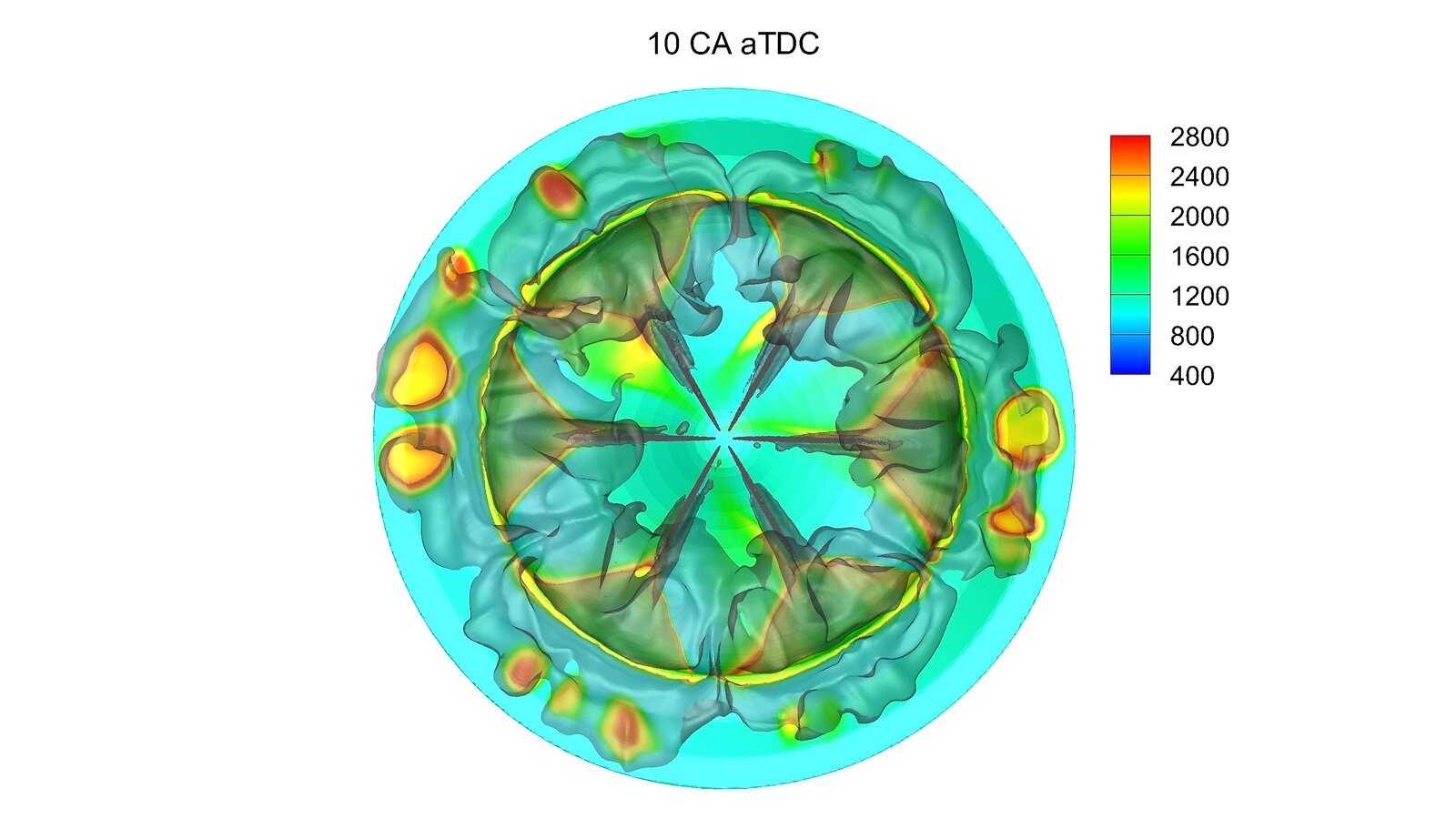
Improving efficiency and reducing emissions in heavy-duty diesel engines

Heavy-duty diesel engines still power most large vehicles used in the construction, mining and transportation industries in the United States. Engineers are working to improve the fuel efficiency of these engines while minimizing pollution to reduce energy consumption and ensure the sustainability of these industries in the future.
To tackle this problem, researchers at the U.S. Department of Energy’s (DOE) Argonne National Laboratory joined forces with Caterpillar Inc., one of the world’s largest manufacturers of construction and mining equipment. Taking advantage of Argonne’s high-performance computing resources, researchers developed a potential piston design for Caterpillar’s engines that could improve fuel efficiency while reducing harmful emissions.
The team first created a framework to optimize combustion system design using a 3D computational fluid dynamics tool called CONVERGE, developed by Convergent Science, Inc. Merging heat transfer and combustion data derived from CONVERGE models with environmental data on soot and nitrogen oxide (NOx) production, they then ran hundreds of high-fidelity simulations to develop promising designs for piston bowls—the combustion chambers in diesel engines.
Using this method, they were able to identify several designs that had the potential to improve fuel efficiency while reducing emissions. Caterpillar created prototypes of the top-performing designs using additive manufacturing techniques to validate the model results.
“By leveraging the supercomputing resources available at Argonne, we ran very detailed simulations and also got the results much more quickly, reducing the simulation time from months to weeks,” said Chao Xu, an Argonne postdoctoral appointee leading the simulation efforts.
https://www.youtube.com/watch?v=/04C2ClQVryY
One particularly promising piston bowl design improved the mixing process between fuel and air. Researchers found that it could reduce fuel consumption by nearly 1 percent, a measurable improvement, while reducing soot by up to 20 percent.
“The workflow we developed will benefit everyone,” said Sibendu Som, manager of the Computational Multi-Physics Research Section in Argonne’s Energy Systems division, who supervises the team working on the project with Caterpillar. “We are publishing our methodology so companies can use it to design new piston bowls for themselves.”
In addition to the project’s simulation innovations, one of the team’s key contributions was its development of an industry-friendly approach, which allows companies to optimize their engine designs using their own in-house computer systems. This simplified model, based on the results of hundreds of the complex simulations, provides a similar level of accuracy while reducing the computational requirements by as much as 40 percent.
“It actually reduces the testing costs if we have a predictive model and optimize designs on a supercomputer. It also reduces the time industry needs to develop a product—a great benefit,” said Prithwish Kundu, a research scientist who is managing the project at Argonne.
“Our work with Argonne on this project enabled the exploration of a massive design space,” said Jon Anders, principal investigator and senior engineering specialist in Caterpillar’s Integrated Components and Solutions division. “By working together and leveraging simulation expertise and computing resources from Argonne with manufacturing and testing expertise at Caterpillar, we were able to optimize and test a piston on a timeline that was far shorter than would have otherwise been possible.”
Argonne conducts largest-ever simulation of flow inside an internal combustion engine
Citation:
Improving efficiency and reducing emissions in heavy-duty diesel engines (2021, May 4)
retrieved 8 May 2021
from https://techxplore.com/news/2021-05-efficiency-emissions-heavy-duty-diesel.html
This document is subject to copyright. Apart from any fair dealing for the purpose of private study or research, no
part may be reproduced without the written permission. The content is provided for information purposes only.
Stay connected with us on social media platform for instant update click here to join our Twitter, & Facebook
We are now on Telegram. Click here to join our channel (@TechiUpdate) and stay updated with the latest Technology headlines.
For all the latest Technology News Click Here
For the latest news and updates, follow us on Google News.

